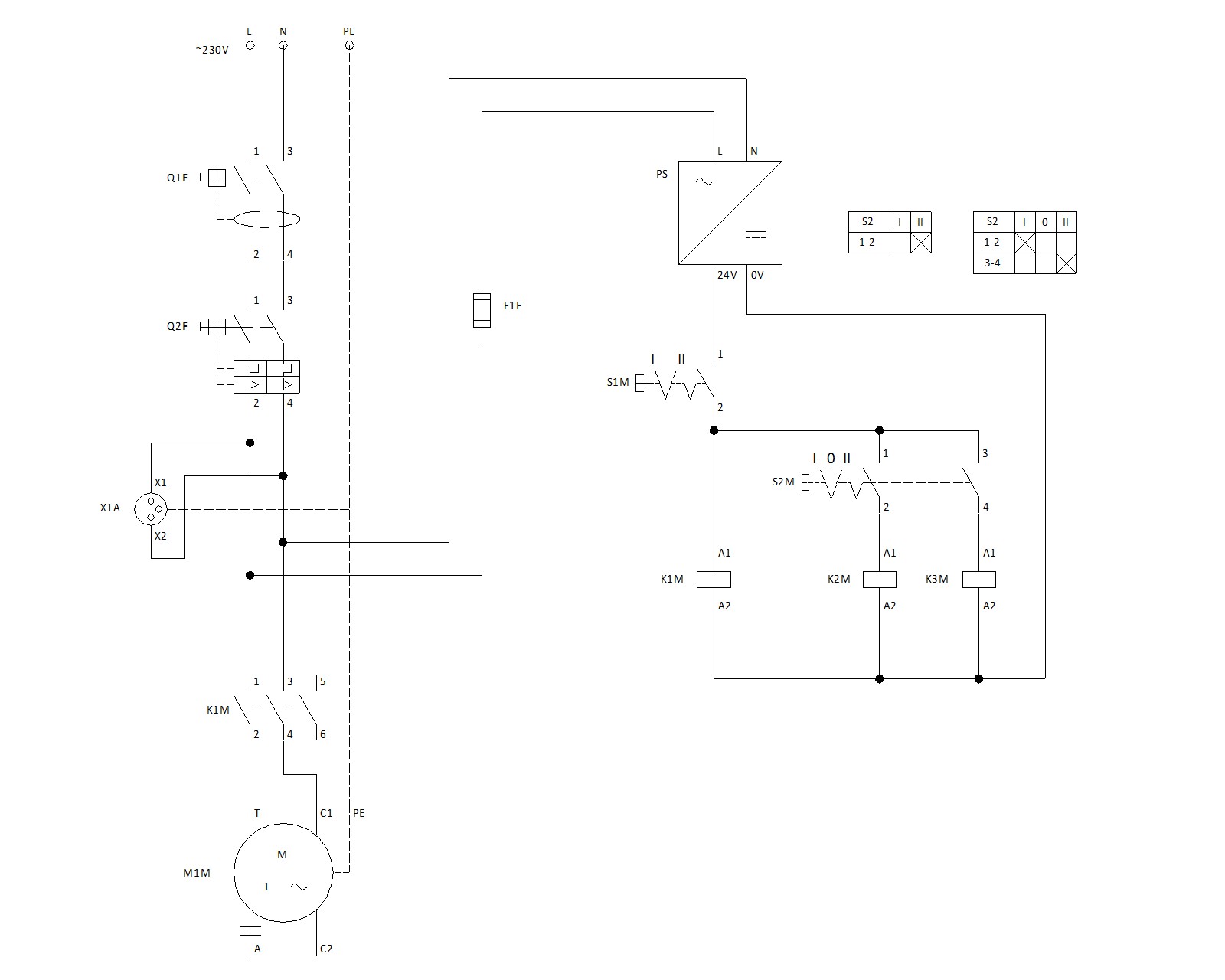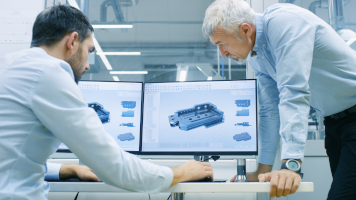Electrical Systems
We design electrical systems for buildings and industrial projects in single-phase or three-phase current, calculation of motors, electrical schemes and the necessary protections for the safety and integrity of people and the systems themselves, in accordance with REBT (Reglamento Electrotécnico de Baja Tensión)
Calculation of power and control circuits of systems in machines and industrial applications for the drives and sensors of the project, making decisions about moving to a more intelligent system with PLC when the project requires it.

Electrical automation scheme
Electrical Automatization
Automation arises as a human need to make faster production processes. It is the action of substituting productive processes carried out by an operator with an equivalent process automatically performed by machines in order to make them more agile. An automation is, therefore, a system capable of performing an operation or a series of operations by means of a series of technologies without the direct human intervention.
Automated systems consist of two different parts: the operational and the command one. The first is the one that includes all the machinery, technology, etc., that acts on the machine. The second one, the control part, is in charge of the process to be carried out. In electrical systems, this is done by means of wired logic.
Wired logic is based on discrete elements which depend on electromagnetism, electrical parts, pneumatic components, hydraulic devices, and so on. It is the most widely used technique today, due to its simplicity when it comes to maintenance and execution of the work, but it is always used for low technical complexity executions.
Power Circuit
Power circuit is in charge of executing the orders received by the control circuit and it is represented in the power scheme. Generally, this circuit does the hardest work, like moving engines, opening valves, turning on lights, and so on. Normally it works at voltages of 230 AC or 400 AC, although we can find medium voltage machines where these would rise.
Control Circuit
Control circuit is in charge of executing the orders which come from the sensors or input elements that we have in our installation. Therefore, its mission will be to govern the power circuit. Its work voltage is very varied, and it will depend on the assembly that we carry out. This type of circuit is represented in the control or maneuvering scheme.
Electrical Panels
As electrical panels, we understand the enclosures that contain all the automation elements. In a simple way, they are the cabinet that include the operating circuits with all its devices. To ensure the proper operation of the installation, they must meet a series of requirements like dimensions and shapes, construction materials, types of doors and closures, degrees of protection, location, forms of fastening and interior conditioning, among other characteristics.
Input Devices
Input devices are those in charge of giving the orders to the automation control circuit so that it carries out the action corresponding to those orders. The most common devices are pushbuttons, switches, selectors, pressure switches, thermostats, levels ... all those elements which start or continue a process by means of an electrical signal.
Signaling Devices
Signaling devices are responsible for indicating the status of the automation to the operator. It is important in a production process to know how it is (broken, stand-by, loading, etc.). In general, the signaling devices are made up of incandescent lamps, neons, LEDs ...
Power Supply
The power supply of a circuit is in charge of providing the electricity necessary for it to work. Power circuits will generally operate with voltages of 230V AC or 400V AC. Different voltages are established for control circuits, which will depend on the type of installation. The control circuit connected in alternate current (AC) will be made directly from the electrical grid. For other voltages, panels must be equipped with transformers that reduce the voltage to the corresponding one according to the assembly that we have carried out. If, on the contrary, the assembly requires the supply of the control in direct current (DC), we must use power supplies.
Our Added Value
Our high added value offers the best solution for our customers, combining different technical areas, computer applications and technologies to optimize their final products.
Programmable logic controllers (PLC) allow to make electrical systems cheaper, by integrating the software essential which govern the sensors and actuators of our application, therefore electrical elements to activate them in different situation are minimized.






